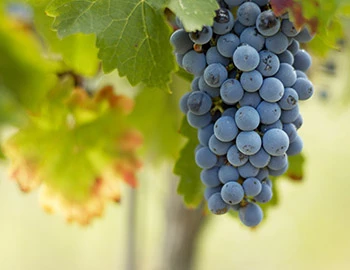
Château Léoville-Las-Cases 2019
AC Saint-Julien 2ème Cru classé, 750 ml

| Grape variety: | Cabernet Sauvignon, Cabernet Franc, Merlot, Petit Verdot |
| Producer: | Château Léoville-Las-Cases |
| Origin: | France / Bordeaux / St-Julien |
| Other vintages: |
Description
Robert Parker, The Wine Advocate (William Kelley) writes about this vintage: "The 2019 Léoville Las Cases is a brilliant young wine that will delight Bordeaux purists. Unwinding in the glass with scents of cassis, dark berries, cigar wrapper and pencil shavings, it’s full- bodied, layered and tightly wound, with a deep core of fruit, lively acids and an abundance of rich, powdery tannins. Concentrated and serious, much like its immediate neighbor Château Latour, it is likely to emerge as one of the vintage’s longest lived—and greatest—wines. One of the greatest and most consistent estates of the Médoc, Léoville Las Cases is in terrific form today. The core of the estate is the 50- hectare "Clos," surrounded by walls and bordering the Gironde to the immediate south of its neighbor, Latour. In the vineyards, where Cabernet Sauvignon rules, the team are experimenting with cover crops and biodynamic methods, and in the cellars and chai, winemaking remains very traditional. The 2019 is one of the very finest wines of the vintage, though as ever, it is not intended for consumers seeking immediate gratification."
Attributes
| Origin: | France / Bordeaux / St-Julien |
| Grape variety: | Cabernet Sauvignon, Cabernet Franc, Merlot, Petit Verdot |
| Ripening potential: | 8 to 30 years |
| Drinking temperature: | 16 to 18 °C |
| Food Pairing: | Saddle of lamb fillet with herb jus, Wild specialities, Risotto with ceps |
| Volume: | 13.0 % |
| Note: | Contains sulphites |
Cabernet Franc
Forefather of the Bordeaux varieties
The Cabernet Franc is one of the oldest varieties of Bordelais and a parent of three other red grapes in the Bordeaux assortment: Cabernet Sauvignon, Merlot and Carmenère. It is distinguished by its complex, flavourful bouquet of raspberry, graphite, violet, liquorice and white pepper. In addition, it presents round, crisp tannins which turn out less strongly than those of Cabernet Sauvignon. While the Cabernet Franc always appears as part of a blend in Bordeaux, it is pressed alone on the Loire. The most renowned appellations are Chinon and Bourgueil. Incidentally, the Cabernet originates not in Bordeaux but in the Spanish Basque Country. Cabernet owes its name to the Latin “carbon”, meaning black.

Petit Verdot
Bordeaux’s secret weapon
It is commonly said that the Petit Verdot originated in Bordeaux. But genetically, it is closer to a group of vines from near the Pyrenees, which are most likely descended from wild clematis. In French, these wild plants are called “lambrusques”, and the Petit Verdot is also known under the synonym Lumbrusquet. It is a high quality grape: very dark and spicy with notes of cassis and graphite, plenty of robust tannins and strong acidity. Most major Bordeaux contain a small proportion of Petit Verdot. Appropriately, it is valued wherever wines are produced according to the Bordeaux recipe. For example, in Italian Maremma or in California, where it covers the largest area worldwide. It is almost never vinified purely by itself. Incidentally, its name, derived from “vert”, meaning green, alludes to its Achilles heel: in cool weather it tends to form small, seedless green grapes.

Merlot
Everybody’s darling
Merlot is the most charming member of the Bordeaux family. It shines with rich colour, fragrant fullness, velvety tannins and sweet, plummy fruit. It even makes itself easy for the vintner, as it matures without issue in cool years as well. This is in contrast to the stricter Cabernet Sauvignon, which it complements as a blending partner. Its good qualities have made the Merlot famous worldwide. At over 100,000 hectares, it is the most-planted grape in France. It also covers large areas in California, Italy, Australia and recently in Eastern Europe. The only catch is that pure Merlot varieties rarely turn out well. Its charm is often associated with a lack of substance. Only the best specimens improve with maturity. They then develop complex notes of leather and truffles. This succeeds in the top wines from the Bordeaux appellation of Pomerol and those from Ticino, among others.

St-Julien
Saint-Julien: in the heart of the Médoc
Although Saint-Julien often stands somewhat in the shadow of the neighboring Pauillac and Margaux appellations, wines from this region promise the best Médoc characteristics. It is also the communal appellation that is the most clearly and compactly structured. The area resembles a square, with sides roughly four kilometres long and an area of 900 hectares. The eleven crus classés occupy 75 percent of this area. Nowhere else in the Médoc does the grand cru classé occupy such a large share of the total vineyard area.

Bordeaux
Bordeaux: high prestige, high quality
With a total area of around 115,000 hectares, Bordeaux may not be France’s largest wine-growing region, but it is certainly its most prestigious. The range of wines produced here today is enormous: ranging from red everyday wines with a great relationship between price and quality to exclusive, and accordingly expensive, premier crus. Elegant white wines and noble sweet specialties round out the spectrum.

France
France – Philosophy in a bottle
According to French philosophy, wine should be an expression of the soil and climate. They use the word “terroir” to describe this. Terroir makes every wine different, and many especially good. French wine is regarded worldwide as an expression of cultural perfection. The French believe that humans are responsible for the quality of the berries, the vine variety for their character, and nature for the quantity. This philosophy can be expressed succinctly as: “the truth is the vineyard, not the man.”


